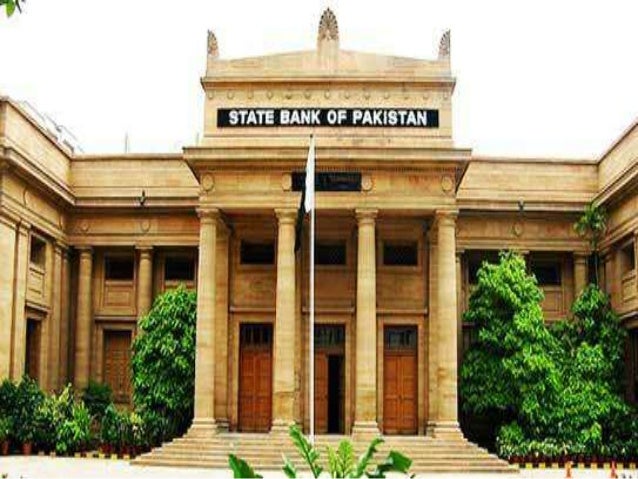KARACHI:
In its most recent outlook portion of the annual report on the State of Pakistan's Economy for the Fiscal Year 2021–2022 the central bank cited pre-flooding "outdated" projections, stating the country's GDP would stay "below the previously announced range of 3%–4% for FY23."
The State Bank of Pakistan (SBP) had, however, reduced its estimate of annual GDP growth to 2% last month.Prior to the recent catastrophic flooding that hit the nation, the bank had earlier predicted economic growth in the range of 3%-4%.The protracted administrative restrictions on imports, high inflation rates, limited foreign exchange reserves, and unsustainable external debt, according to a number of financial experts, suggest that this year's economic growth may be well below 2%.
Similar to this, the bank's annual report contains an out-of-date forecast for the year's current account deficit (CAD). It stated, "The SBP projects [the] CAD to decline below the level of 4.6% of GDP in FY23."Recall that in its most recent statement on monetary policy, released last month, the SBP predicted that the CAD would be around 3% (or roughly $10 billion).Thirdly, it also provided the out-of-date inflation reading prediction for the current fiscal year. In the annual report, it predicted pre-flood inflation would range between 18% and 20% for the year.The central bank had increased its inflation forecast last month to 21%–23%.
According to the SBP's annual report, the recent severe flooding had amplified the steps taken by the incumbent administration to cool down the then-overheated economy, setting the stage for a slowdown in economic growth below 3-4% in the current fiscal year 2023.This number stands out sharply in contrast to the 6% observed in the preceding fiscal year 2022.According to the bank, "Pakistan's economic growth is likely to decelerate significantly during FY23."
The demand compression measures implemented by the government and SBP have begun to cool down the overheated economy in the first months of FY23, as indicated by the shrinking sales of high frequency demand indicators. When widespread floods struck a significant portion of the nation at the beginning of FY23, the economy was already in a stabilisation phase, the research continued.
Through a variety of pathways, the flooding in FY23 is likely to have an impact on the real economic activity of the nation.Specifically, through a variety of backward and forward connections, the losses in the agricultural sector resulting from harm to animals and crops are likely to spread to the rest of the economy.
According to the annual report, the extensive loss of the infrastructure in the afflicted provinces could also harm the chances for the nation's growth in the coming year.Inflation is projected to fluctuate throughout the year due to supply shocks like the elimination of energy subsidies and the resumption of fuel taxes, as well as losses to agricultural products from floods.Since June 2022, the removal of subsidies and an increase in gasoline taxes have caused a rapid rise in inflation; this trend is projected to continue in FY23. Similar to this, it is anticipated that the supply shortages of perishable food items brought on by the floods will further boost prices.
On the other hand, income losses brought on by the flood and stabilisation measures put in place since last year may limit the amount of demand-pull inflation this year, according to the central bank.The removal of exemptions, a rise in tax rates, and the return of fuel duty are intended to broaden the tax base and increase revenue during FY23.With the reinstatement of the petroleum development levy (PDL) on the expenditure side, non-tax revenues will also increase, and the rationalisation of subsidies is likely to restrain current expenditures.
External account pressures in FY23 are probably going to be lessened by the coordinated fiscal and monetary policy approach.On the other hand, income losses brought on by the flood and stabilisation measures put in place since last year may limit the amount of demand-pull inflation this year, according to the central bank.The removal of exemptions, a rise in tax rates, and the return of fuel duty are intended to broaden the tax base and increase revenue during FY23.
With the reinstatement of the petroleum development levy (PDL) on the expenditure side, non-tax revenues will also increase, and the rationalisation of subsidies is likely to restrain current expenditures.
External account pressures in FY23 are probably going to be lessened by the coordinated fiscal and monetary policy approach.After seeing a surge in FY21, the workers' remittances seem to have peaked in FY22 and are probably going to stay at a similar level in FY23.
An upside risk to this estimate is provided by the windfall profit from rising oil prices in the Gulf Cooperation Council (GCC) nations.Additionally, the outlook for the financial account has brightened with the restart of the International Monetary Fund (IMF) programme.The government is anticipated to obtain external financing from multilateral and bilateral creditors in addition to the IMF programme disbursements, which will significantly boost the position of foreign reserves during FY23.


No comments:
Post a Comment